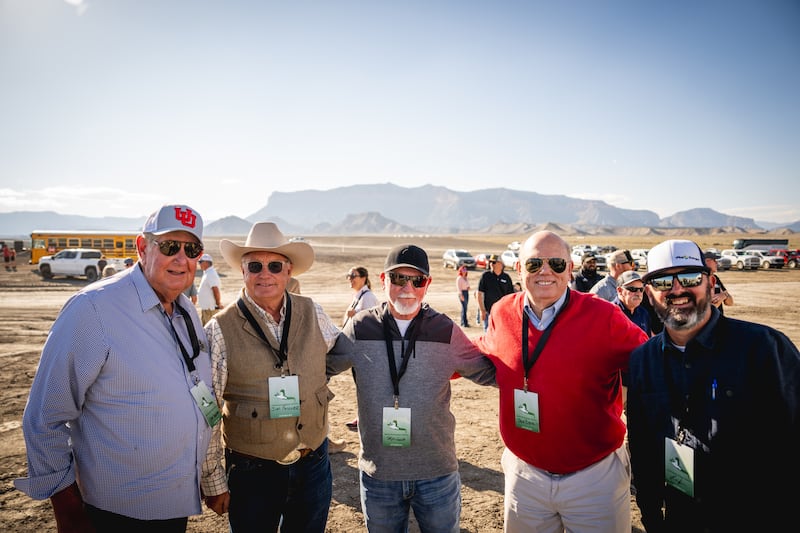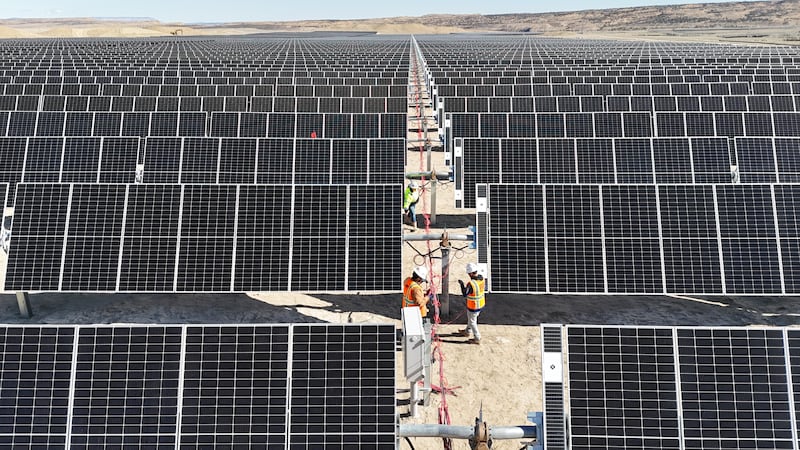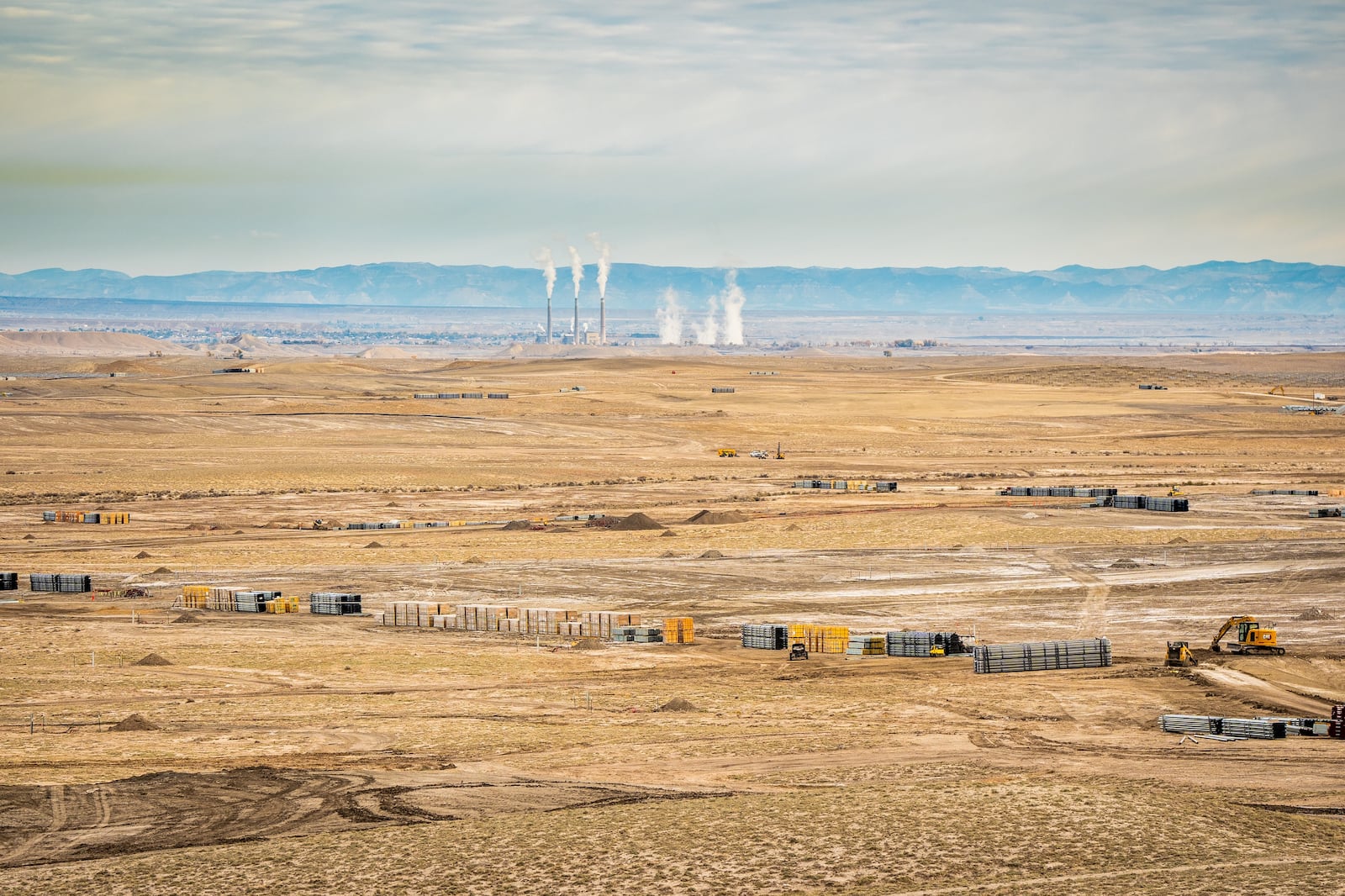This story appears in the May 2025 issue of Utah Business. Subscribe.
Utah’s 29 counties each offer businesses and employees something different. Named the best state in the nation two years in a row, it’s Utah’s varied counties that provide opportunities for all. Let’s visit Emery County.
Emery County is home to some large claims to fame. More than 12,000 bones have been excavated from the Cleveland-Lloyd Dinosaur Quarry, the densest deposit of Jurassic dinosaur fossils ever found. Green River’s Melon Days started in 1906 and has boasted ownership of the world’s largest watermelon slice parade float since 1960. And in September 2024, Emery County is where Salt Lake-based rPlus Energies began building the largest planned solar-plus-storage facility in Utah and one of the largest in the PacifiCorp system.
“The energy from the project will support all PacifiCorp customers/ratepayers across its service territory — including you and me,” says Maile Resta, communications associate at rPlus Energies.
Over 1 million Utahns currently rely on Rocky Mountain Power, a division of PacifiCorp, for energy. The Green River Energy Center — which will spread over 3,000 acres of land north of Moore, Utah — will provide a total energy storage capacity of 1,600 MWh and should be operational by late spring 2026.
At the groundbreaking ceremony, Utah Gov. Spencer Cox said, “This project is being built in rural Utah, by rural Utahns, and for all of Utah. When rural Utah thrives, the entire state prospers. Today, we’re not just breaking ground — we’re building a future of affordable, abundant energy in Utah.”
The biggest partnership in Emery County
Luigi Resta, the president of rPlus Energies, first visited the project’s current site at Castle Valley Ranches over a decade ago.
“I met Luigi Resta probably 15 years ago now,” says Jim Fauver, foreman of Castle Valley Ranches. “Luigi was with another company then, and they came in to talk to us about exploring the opportunities of putting solar on some of our properties that were not productive. [The land is] basically just desert ground that is not good for grazing or for farming. It’s taken us this long to see that process come to reality.”
“We are a power county. That’s what we’ve always been since the ’70s, ... Power generation has been what Emery County is known for, but a big part of that has been the coal mines. There was a feeling at first that these solar plants would be detrimental to the coal mines and the power plants here, but … these solar plants will actually extend the life of the coal-fired power plants.”
— Jim Fauver
Today, rPlus Energies leases 2,000 acres of Castle Valley Ranches, helping Castle Valley balance out the highs and lows of its typical agricultural income.
“Agriculture is a roller coaster ride at best. [The Green River Energy Center] stabilizes our income stream so that when cow prices go down or hay prices go way up, we’re able to stay steady,” Fauver explains. “It is what the old cowboys say, ‘If I win the lottery, well, I’ll farm until I’m broke.’”
Construction on the site brings an influx of 500 new jobs, according to minutes kept by a public utilities, energy and technology interim committee meeting in October. Once completed, the Green River Energy Center will create 15-20 permanent full-time positions and an estimated $55 million in property taxes over its lifespan. Emery County has found the lottery ticket that will keep the farms running.
The startup costs are minimal due to PacifiCorp’s existing network of transmission lines from coal-fired power plants in Emery County. By positioning the center just south of the Hunter Power Plant, which will continue operations until 2042, rPlus gained easy access to lines and avoided building the usual mass of infrastructure required for functionality.

Generating community support
Fauver says the community response to the center has been 50/50 despite the estimated benefits.
“We are a power county. That’s what we’ve always been since the ’70s,” he explains. “Power generation has been what Emery County is known for, but a big part of that has been the coal mines. There was a feeling at first that these solar plants would be detrimental to the coal mines and the power plants here, but … these solar plants will actually extend the life of the coal-fired power plants.”
According to Fauver, the extra power generated by the solar plant can cover enough lag time to allow individual coal power units to shut down for repairs and rebuilds. Equipment can last longer, and customers won’t even notice the time off.
Projects like the Green River Energy Center can transform small, rural communities. Leaders in counties like Box Elder and Cache have expressed that business support of education and job creation for local youth and professionals is essential to keeping businesses and people thriving in their counties. Fauver agrees and is a witness to rPlus’ community support.

“The neatest thing about them is they’re very community oriented,” Fauver says. “They’ve helped to sponsor sports teams. They’ve helped with the rodeo. They’ve helped with the fair. They’ve set up a college fund.”
The $375,000 college fund contributed by Green River Energy Center project partners to establish the “Local First Scholarship” and “Energy First Scholarship.” These scholarships will provide for Emery and Carbon County students who plan to remain in the area after attaining degrees or certifications from Utah State University Eastern and students studying in energy-related fields.
“Being based in Salt Lake City, we’re fortunate to spend a lot of time in the community, which helps us build relationships and stay engaged,” Maile says. “We strive to be the best partners possible by showing up consistently and investing in the local economy.”

